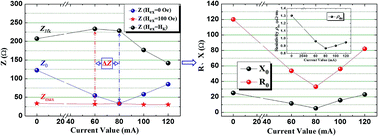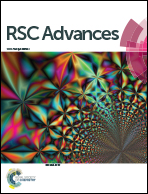The disparate impact of two types of GMI effect definition on DC Joule-heating annealed Co-based microwires
Abstract
Based on a comprehensive study of the effect of progressive DC Joule-heating annealing (DJA) on giant magneto-impedance (GMI) properties of melt-extracted amorphous microwires, we systematically analysed the different mechanisms for two types of GMI effect definition. Experimental results show that DJA can improve GMI response characteristics and magnetic field sensitivity (MFS) effectively for both definitions, but ΔZ/Z0 is enhanced much more than ΔZ/Zmax of the as-cast wires. At 20 MHz, the maximum GMI ratios, as denoted by ΔZ/Z0 and ΔZ/Zmax, of DJA microwires are enhanced to 582.59% and 639.13%, while the values for the as-cast wires are 69.09% and 520.48% respectively. Meanwhile, the MFS (ξmax) and equivalent magnetic anisotropy field (Hk) increase to 1346.4%/Oe (ΔZ/Z0), 2927.9%/Oe (ΔZ/Zmax) and 1.1 Oe, respectively. These significant effects of GMI properties as denoted by Z0 are mainly attributed to the change of resistivity (ρdc) for amorphous microwires induced by DJA. Revealing the mechanism of different effects can also result in the development of a micromagnetic field sensor, especially for geomagnetic sensor applications (∼±1.0 Oe).


 Please wait while we load your content...
Please wait while we load your content...